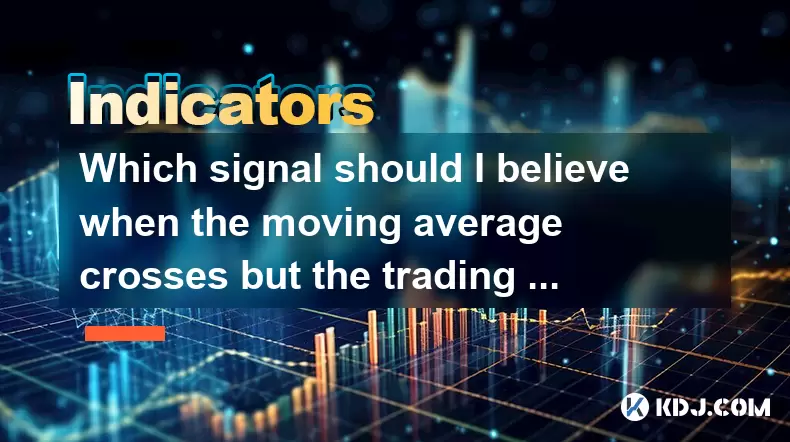-
 Bitcoin
Bitcoin $119900
0.91% -
 Ethereum
Ethereum $4576
8.55% -
 XRP
XRP $3.264
4.05% -
 Tether USDt
Tether USDt $0.9998
-0.05% -
 BNB
BNB $834.7
4.17% -
 Solana
Solana $191.8
9.96% -
 USDC
USDC $0.9998
-0.02% -
 Dogecoin
Dogecoin $0.2363
6.08% -
 TRON
TRON $0.3525
2.56% -
 Cardano
Cardano $0.8419
9.12% -
 Chainlink
Chainlink $23.19
9.97% -
 Hyperliquid
Hyperliquid $44.97
4.53% -
 Stellar
Stellar $0.4489
4.20% -
 Sui
Sui $3.876
6.19% -
 Bitcoin Cash
Bitcoin Cash $618.1
7.14% -
 Hedera
Hedera $0.2617
6.55% -
 Ethena USDe
Ethena USDe $1.000
-0.03% -
 Avalanche
Avalanche $24.61
7.96% -
 Litecoin
Litecoin $131.7
9.52% -
 Toncoin
Toncoin $3.502
3.62% -
 UNUS SED LEO
UNUS SED LEO $9.093
1.32% -
 Shiba Inu
Shiba Inu $0.00001358
5.37% -
 Uniswap
Uniswap $11.50
5.05% -
 Polkadot
Polkadot $4.150
7.77% -
 Dai
Dai $0.9997
-0.05% -
 Cronos
Cronos $0.1650
-0.75% -
 Ethena
Ethena $0.7981
2.06% -
 Pepe
Pepe $0.00001216
8.64% -
 Bitget Token
Bitget Token $4.467
1.74% -
 Aave
Aave $319.2
9.18%
Which signal should I believe when the moving average crosses but the trading volume increases?
When a moving average cross coincides with high trading volume, it's a stronger signal for trend changes; consider broader market context for confirmation.
Jun 09, 2025 at 02:57 am

Introduction to Moving Averages and Trading Volume
In the realm of cryptocurrency trading, understanding technical indicators like moving averages and trading volume can significantly influence your decision-making process. A moving average is a widely used indicator that helps smooth out price data to identify trends over a specific period. On the other hand, trading volume represents the number of shares or contracts traded within a given timeframe, providing insight into the strength or weakness of a price move. When a moving average crosses occur simultaneously with an increase in trading volume, it can create a confusing scenario for traders. This article aims to dissect these signals and guide you on which one to prioritize.
Understanding Moving Average Crosses
A moving average cross happens when a shorter-term moving average, such as the 50-day moving average, crosses above or below a longer-term moving average, like the 200-day moving average. This event is often interpreted as a signal for potential trend changes. For instance, if the 50-day moving average crosses above the 200-day moving average, it might suggest a bullish trend, commonly referred to as a golden cross. Conversely, if the 50-day moving average crosses below the 200-day moving average, it might indicate a bearish trend, known as a death cross.
The Role of Trading Volume in Market Analysis
Trading volume is a critical component in confirming the strength of a price move. When prices move significantly with high trading volume, it often indicates strong market interest and conviction in the direction of the price move. Conversely, if a price change occurs with low trading volume, it might suggest a lack of commitment from market participants, and the price move could be less reliable.
Analyzing the Scenario: Moving Average Crosses with Increased Volume
When you encounter a moving average cross accompanied by an increase in trading volume, it's essential to evaluate both signals comprehensively. A moving average cross can be a potent signal for trend changes, but the increase in trading volume can add a layer of confirmation. Here's how to approach this scenario:
Identify the Type of Moving Average Cross: Determine whether it's a golden cross or a death cross. This will help you understand the potential direction of the trend.
Analyze the Volume Increase: Look at the volume levels before, during, and after the cross. A significant increase in volume during the cross suggests that the market is strongly endorsing the new trend.
Contextualize the Signals: Consider the broader market context. Is the cross happening during a period of high market volatility? Are there any significant news events that could be driving the volume?
Combine Both Signals: If the moving average cross is supported by high trading volume, it's generally a stronger signal. For instance, a golden cross with high volume is more likely to indicate a robust bullish trend than a golden cross with low volume.
Practical Example: Interpreting Signals in a Real-World Scenario
Let's consider a hypothetical scenario where the 50-day moving average of Bitcoin crosses above the 200-day moving average, and simultaneously, the trading volume spikes significantly. Here's how you might interpret and act on these signals:
Observe the Moving Average Cross: You notice that the 50-day moving average of Bitcoin has crossed above the 200-day moving average, signaling a potential bullish trend.
Check the Trading Volume: You see that the trading volume has increased substantially during this cross, suggesting strong market interest in the price move.
Confirm the Signal: Given the high volume during the golden cross, you might feel more confident in the bullish signal. This combination suggests that the market is strongly supporting the upward trend.
Make a Trading Decision: Based on these signals, you might decide to enter a long position on Bitcoin, anticipating further price increases.
Potential Pitfalls and Considerations
While a moving average cross with high trading volume can be a strong signal, it's crucial to be aware of potential pitfalls:
False Signals: Even with high volume, moving average crosses can sometimes lead to false signals. Always consider the broader market context and other technical indicators.
Overreliance on a Single Indicator: Relying solely on moving averages and volume can be risky. Use other indicators like the Relative Strength Index (RSI) or Bollinger Bands to corroborate your analysis.
Market Manipulation: In the crypto market, high volume can sometimes be the result of market manipulation. Be cautious and look for consistent volume increases over time rather than one-off spikes.
FAQs
Q: Can a moving average cross occur without a change in trading volume, and what does it signify?
A: Yes, a moving average cross can occur without a change in trading volume. If this happens, it might indicate a weaker trend change signal. The lack of volume suggests that the market may not be fully committed to the new trend, and the cross could be less reliable.
Q: How can I differentiate between a genuine volume increase and a volume spike caused by market manipulation?
A: Differentiating between genuine volume increases and manipulation can be challenging. Look for consistent volume increases over multiple periods rather than sudden spikes. Additionally, cross-reference with other indicators and market news to ensure the volume increase aligns with market sentiment.
Q: Are there specific moving average periods that are more reliable for cryptocurrency trading?
A: The reliability of moving average periods can vary depending on the cryptocurrency and market conditions. Commonly used periods include the 50-day and 200-day moving averages, but some traders also use shorter periods like the 10-day or 20-day moving averages for more immediate signals. Experiment with different periods to find what works best for your trading strategy.
Q: How important is it to consider the time frame when analyzing moving average crosses and trading volume?
A: The time frame is crucial when analyzing moving average crosses and trading volume. Shorter time frames can provide more immediate signals but may be more susceptible to noise and false signals. Longer time frames offer more reliable trend signals but might delay your entry or exit points. Choose a time frame that aligns with your trading goals and risk tolerance.
Disclaimer:info@kdj.com
The information provided is not trading advice. kdj.com does not assume any responsibility for any investments made based on the information provided in this article. Cryptocurrencies are highly volatile and it is highly recommended that you invest with caution after thorough research!
If you believe that the content used on this website infringes your copyright, please contact us immediately (info@kdj.com) and we will delete it promptly.
- Unich's OTC Exchange: Surging with $1.2B Volume – What's the Hype?
- 2025-08-13 02:50:11
- MoonBull's Explosive Moves: Your Crypto Whitelist Ticket to Ride!
- 2025-08-13 02:30:11
- MAGACOIN Finance: Don't Miss the Presale Bonus!
- 2025-08-13 02:30:11
- Trump's Crypto Kingdom: $2.4 Billion and Counting
- 2025-08-13 02:50:11
- Solana, LSTs, and SEC Approval: A New Dawn for Crypto?
- 2025-08-13 02:55:12
- Bitcoin's Profit Surge: Unpacking the BTC Value Boom
- 2025-08-13 02:55:12
Related knowledge

What does it mean when the +DI and -DI cross frequently in the DMI indicator but the ADX is flattening?
Aug 11,2025 at 03:15am
Understanding the DMI Indicator ComponentsThe Directional Movement Index (DMI) is a technical analysis tool composed of three lines: the +DI (Positive...

What does it mean when the moving average, MACD, and RSI all send buy signals simultaneously?
Aug 11,2025 at 01:42pm
Understanding the Convergence of Technical IndicatorsWhen the moving average, MACD, and RSI all generate buy signals at the same time, traders interpr...

What does it mean when the price is trading above the SAR indicator but the red dots are densely packed?
Aug 09,2025 at 11:49pm
Understanding the SAR Indicator and Its Visual SignalsThe SAR (Parabolic Stop and Reverse) indicator is a technical analysis tool used primarily to de...

What does it mean when the candlestick chart forms a "Morning Star" but trading volume is sluggish?
Aug 12,2025 at 06:28pm
Understanding the Morning Star Candlestick PatternThe Morning Star is a three-candle bullish reversal pattern commonly observed in cryptocurrency pric...

What does it mean when the RSI indicator moves sideways for an extended period between 40 and 60?
Aug 10,2025 at 08:08am
Understanding the RSI Indicator in Cryptocurrency TradingThe Relative Strength Index (RSI) is a momentum oscillator widely used in cryptocurrency trad...

What does it mean when the MACD histogram continues to shorten but the price reaches a new high?
Aug 09,2025 at 09:29pm
Understanding the MACD Histogram and Its ComponentsThe MACD (Moving Average Convergence Divergence) indicator is a widely used technical analysis tool...

What does it mean when the +DI and -DI cross frequently in the DMI indicator but the ADX is flattening?
Aug 11,2025 at 03:15am
Understanding the DMI Indicator ComponentsThe Directional Movement Index (DMI) is a technical analysis tool composed of three lines: the +DI (Positive...

What does it mean when the moving average, MACD, and RSI all send buy signals simultaneously?
Aug 11,2025 at 01:42pm
Understanding the Convergence of Technical IndicatorsWhen the moving average, MACD, and RSI all generate buy signals at the same time, traders interpr...

What does it mean when the price is trading above the SAR indicator but the red dots are densely packed?
Aug 09,2025 at 11:49pm
Understanding the SAR Indicator and Its Visual SignalsThe SAR (Parabolic Stop and Reverse) indicator is a technical analysis tool used primarily to de...

What does it mean when the candlestick chart forms a "Morning Star" but trading volume is sluggish?
Aug 12,2025 at 06:28pm
Understanding the Morning Star Candlestick PatternThe Morning Star is a three-candle bullish reversal pattern commonly observed in cryptocurrency pric...

What does it mean when the RSI indicator moves sideways for an extended period between 40 and 60?
Aug 10,2025 at 08:08am
Understanding the RSI Indicator in Cryptocurrency TradingThe Relative Strength Index (RSI) is a momentum oscillator widely used in cryptocurrency trad...

What does it mean when the MACD histogram continues to shorten but the price reaches a new high?
Aug 09,2025 at 09:29pm
Understanding the MACD Histogram and Its ComponentsThe MACD (Moving Average Convergence Divergence) indicator is a widely used technical analysis tool...
See all articles

























































































